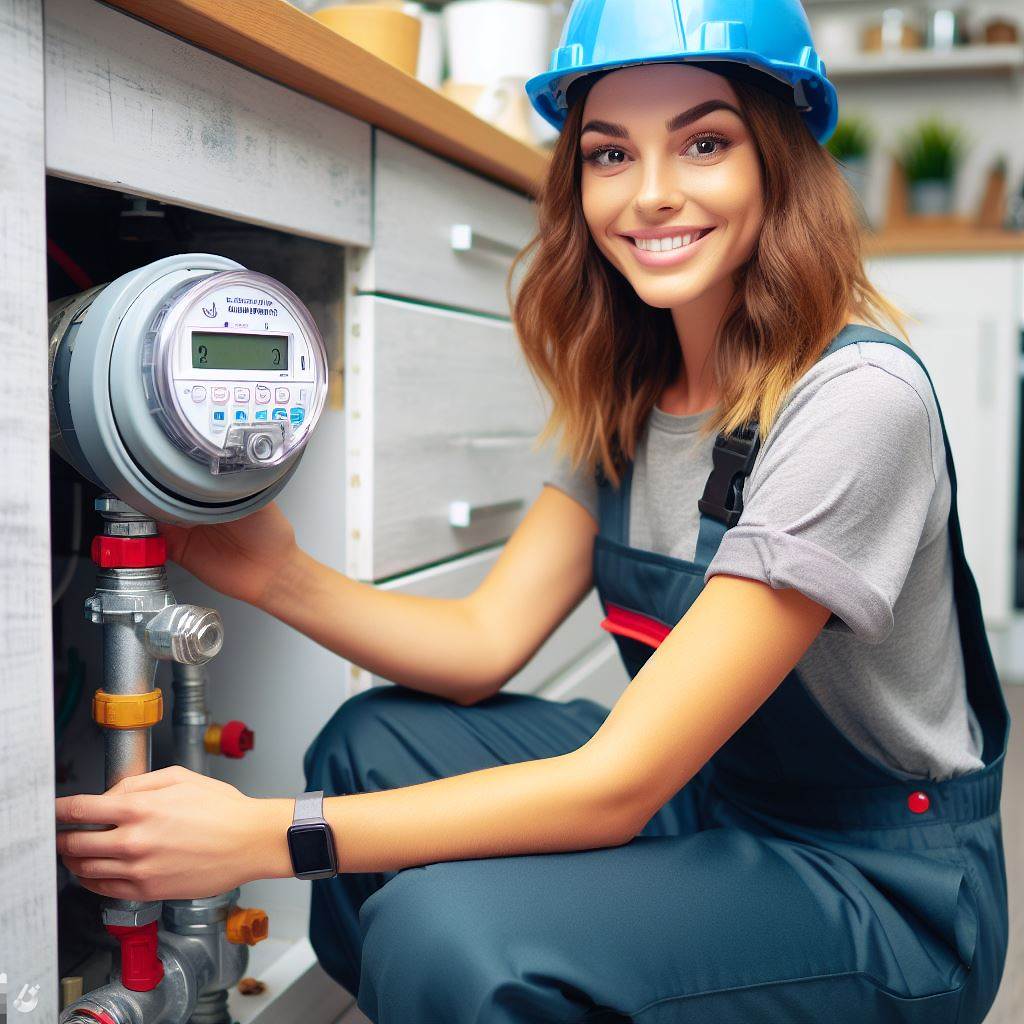Introduction
In the realm of plumbing innovations within the Australian market, it is crucial to delve into the transformative developments that have been shaping the industry landscape.
These innovations, spanning a spectrum of technological advancements and sustainable practices, have not only redefined traditional approaches but have also become integral to the evolution of plumbing practices.
The significance of these plumbing innovations in the industry cannot be overstated.
They serve as catalysts for enhanced efficiency, resource conservation, and environmental sustainability.
From advanced water-saving technologies to cutting-edge materials, these innovations play a pivotal role in addressing contemporary challenges and aligning the plumbing sector with evolving global standards.
As we embark on this exploration of plumbing innovations, a preview of key points promises to provide readers with a roadmap for the ensuing discussion.
Anticipate insights into groundbreaking technologies, eco-friendly practices, and the overall impact of these innovations on both the plumbing profession and the broader community.
This blog post aims to offer a comprehensive overview, shedding light on the exciting developments that define the current state of plumbing in the Australian market.
Evolution of Plumbing Technology
Traditional methods of plumbing in Australia
Traditional plumbing methods in Australia relied heavily on copper pipes and manual labor.
Plumbers would use copper pipes for supplying drinking water and removing waste.
These methods required extensive digging and trenching to lay the pipes underground.
Plumbers had to manually solder the joints to ensure leak-free connections.
The traditional methods were time-consuming, labor-intensive, and often caused disruptions to the surroundings.
The advancements in plumbing technology over the years
Introduction of PVC pipes
PVC pipes revolutionized the plumbing industry with their lightweight, durable, and cost-effective characteristics.
They replaced copper pipes as the primary material for both water supply and drainage systems.
PVC pipes are easier to install, require fewer joints, and have excellent resistance against corrosion and chemicals.
Their flexibility also allows for easy customization and routing in complex plumbing layouts.
Adoption of trenchless pipe repair techniques
Trenchless pipe repair techniques have transformed the way plumbing repairs are done.
Instead of digging trenches, plumbers now use advanced technologies to repair pipes without extensive excavation.
Methods like pipe relining and pipe bursting allow for repairing or replacing damaged pipes underground.
This minimizes disruptions to landscapes, pavements, and structures above the pipes, resulting in cost and time savings.
Smart plumbing systems and IoT integration
With the advent of smart home technology, plumbing systems have also seen significant advancements.
Smart plumbing systems leverage IoT (Internet of Things) integration to enhance efficiency and convenience.
Sensors and smart devices are installed to monitor water usage, detect leaks, and control water flow remotely.
Homeowners can access real-time data on their smartphones, optimizing water management and reducing wastage.
IoT integration also enables predictive maintenance, allowing timely repairs before major issues arise.
The benefits of using modern plumbing technology
Modern plumbing technology offers several benefits for both homeowners and plumbers. The use of PVC pipes reduces material costs, installation time, and maintenance efforts.
Trenchless pipe repair techniques minimize disruptions and save on repair costs. Smart plumbing systems enable efficient water management, reducing water bills and carbon footprint.
IoT integration ensures early leak detection, preventing water damage and conserving resources.
Overall, modern plumbing technology improves efficiency, durability, and sustainability in the Australian market.
In essence, the plumbing industry in Australia has witnessed a significant evolution in technology.
Traditional methods have been replaced by modern innovations like PVC pipes, trenchless repairs, and smart systems.
These advancements have brought numerous benefits, including cost savings, convenience, and environmental sustainability.
Plumbing technology will continue to evolve, making plumbing systems more efficient, intelligent, and eco-friendly in the future.
Sustainability and Water Conservation Innovations
The Growing Importance of Sustainability in Plumbing
Sustainability in plumbing is gaining prominence due to its positive impact on the environment.
By implementing eco-friendly plumbing systems, we can reduce water consumption and promote long-term resource preservation.
Water Conservation Innovations in the Australian Market
Water-efficient fixtures and appliances
- Low-flow faucets, toilets, and showerheads significantly reduce water usage without compromising performance.
- Dishwashers and washing machines with high energy star ratings help conserve water.
Greywater recycling systems
- Greywater, the relatively clean wastewater from sinks, showers, and laundry, can be treated and reused for non-potable purposes.
- These systems reduce the strain on freshwater sources and the cost of water supply.
Rainwater harvesting techniques
- Collecting rainwater and storing it in tanks for later use in irrigation, toilet flushing, or washing machines.
- This practice conserves municipal water supply and helps reduce water bills.
Impact of Innovations on Water Consumption and Environmental Impact
The adoption of these water conservation innovations brings several benefits:
Reduced water consumption
- Water-efficient fixtures and appliances can decrease water usage by up to 30%.
- Greywater recycling systems can save thousands of liters of water annually.
Preserving water resources
- By harnessing rainwater and reusing greywater, we lessen the burden on freshwater sources.
- This ensures a more sustainable water supply for future generations.
Environmental benefits
- Lower water consumption reduces energy consumption for water treatment and distribution.
- Decreased reliance on freshwater sources protects aquatic ecosystems and reduces carbon emissions.
Cost savings
- Water-efficient fixtures and appliances lead to lower water bills for households and businesses.
- Rainwater harvesting and greywater recycling systems offer long-term savings on water bills.
In fact, sustainability in plumbing is essential to address environmental concerns and conserve water resources.
Water-efficient fixtures, greywater recycling, and rainwater harvesting techniques significantly reduce water consumption.
Implementing these innovations not only benefits the environment but also brings cost savings to individuals and businesses.
Read: Top Plumbing Trends in Australian Engineering
Energy Efficiency in Plumbing
The Need for Energy-efficient Plumbing Solutions
Energy-efficient plumbing solutions are essential to reduce energy consumption and minimize environmental impact.
Your Personalized Career Strategy
Unlock your potential with tailored career consulting. Get clear, actionable steps designed for your success. Start now!
Get StartedEnergy-saving Innovations in the Australian Plumbing Market
- Energy-efficient Water Heaters: Water heaters with high energy efficiency ratings reduce energy waste and lower utility bills.
- Solar-powered Plumbing Systems: Using solar power to heat water and support plumbing systems significantly reduces energy consumption and costs.
- Thermal Insulation for Pipes: Thermal insulation prevents heat loss in pipes, improving energy efficiency and reducing energy use.
The Benefits of Energy-efficient Plumbing
Energy-efficient plumbing not only saves costs but also promotes environmental sustainability.
- Cost Savings: By using energy-efficient plumbing solutions, homeowners can significantly reduce their energy bills and save money in the long run.
- Reduced Environmental Impact: Energy-efficient plumbing solutions help conserve energy resources and decrease greenhouse gas emissions.
- Water Conservation: Water-saving fixtures coupled with energy-efficient plumbing systems can help conserve water, an increasingly precious resource.
- Enhanced Comfort: Energy-efficient plumbing improvements, such as properly insulated pipes, ensure hot water reaches taps faster, enhancing user comfort.
- Improved Durability: Energy-efficient plumbing solutions often have advanced technologies and features, resulting in longer lifespans, reducing waste and the need for replacements.
- Government Incentives: Many local and federal governments offer incentives, rebates, and subsidies to promote energy-efficient plumbing installations.
- Future-proofing: Investing in energy-efficient plumbing ensures that a property is prepared for upcoming energy efficiency regulations and requirements.
- Green Building Certifications: Energy-efficient plumbing installations contribute towards earning green building certifications, adding value to properties.
Lastly, energy-efficient plumbing solutions offer numerous benefits, ranging from cost savings to environmental sustainability.
Incorporating these innovations in the Australian market is crucial for a more energy-conscious and sustainable future.
Read: The Future of Plumbing Tech in Australia

Advancements in Plumbing Tools and Equipment
Importance of Advanced Tools and Equipment in the Plumbing Industry
Using advanced tools and equipment plays a crucial role in the plumbing industry.
Latest Innovations in Plumbing Tools
Pipe inspection cameras
These cameras provide a clear visual of the inside of pipes, helping plumbers detect issues accurately and quickly.
The adoption of pipe inspection cameras has revolutionized the way plumbers diagnose pipe problems.
Suppose a customer reports a drainage issue.
In that case, plumbers can easily insert a pipe inspection camera into the affected pipe to inspect it thoroughly.
The camera provides a live feed and clear visuals of the interior, enabling plumbers to identify any cracks, blockages, or other faults.
This visual evidence aids in providing accurate cost estimates and explaining the problem to customers effectively.
Consequently, customers feel more confident in the expertise and recommendations of the plumber.
Leak detection devices
Advanced leak detection devices can detect even the smallest leaks in pipes, preventing further damage and reducing water wastage.
Leak detection devices have also become increasingly advanced, offering precise information that helps plumbers address leaks promptly and effectively.
These devices can detect leaks in hidden or hard-to-reach areas, minimizing the need for invasive exploratory measures.
Plumbers can use the information gathered by leak detection devices to determine the most appropriate repair method and ensure a long-lasting fix.
By identifying and fixing leaks accurately, plumbers prevent water damage and conserve water resources, benefiting both customers and the environment.
High-pressure water jetting systems
These systems use high-pressure water to clean drains and remove blockages, eliminating the need for harsh chemicals.
Furthermore, high-pressure water jetting systems have gained popularity due to their ability to clean drains efficiently and without the need for harmful chemicals.
Plumbers can use these systems to remove stubborn clogs, mineral deposits, and tree roots effectively.
The high-pressure water jetting systems not only clear the drains but also improve their longevity by removing build-up and ensuring smooth water flow.
This technology is not only eco-friendly but also cost-effective, as it reduces the frequency of drain-related issues and subsequent service calls.
Advancements Improving Efficiency, Accuracy, and Customer Satisfaction
The introduction of these advanced tools and equipment in the plumbing industry has significantly improved various aspects, including:
- Efficiency: With pipe inspection cameras, plumbers can identify exact locations of problems, reducing time spent on exploration and enabling quicker repairs.
- Accuracy: Leak detection devices provide precise information on the severity and location of leaks, allowing plumbers to fix them accurately without any guesswork.
- Customer Satisfaction: The use of innovative tools and equipment enhances customer satisfaction by ensuring faster and more reliable plumbing services.
In general, the advancements in plumbing tools and equipment have brought significant benefits to the industry.
Pipe inspection cameras, leak detection devices, and high-pressure water jetting systems have transformed the way plumbers diagnose and fix plumbing issues.
These advancements improve efficiency, accuracy, and customer satisfaction, making the plumbing experience smoother and more reliable for both the professionals and their clients.
Read: A Day in the Life of an Aussie Plumber
Explore Further: Renewable Energy and Aussie Mech Eng
Challenges and Future Trends in Plumbing Innovations
The challenges faced by plumbers in adopting new technologies
- Resistance to change among traditional plumbers
- Lack of training and knowledge on new plumbing technologies
- High costs associated with upgrading tools and equipment
- Difficulties in integrating new technologies into existing plumbing systems
- Potential loss of job opportunities due to automation
Explore the future trends in plumbing innovations
Continued development of smart plumbing systems
- Sensors and IoT technology for leak detection and water conservation
- Remote monitoring and control of plumbing systems
Integration of artificial intelligence in plumbing operations:
- Machine learning algorithms for predictive maintenance and fault detection
- AI-powered virtual assistants for troubleshooting and customer support
Emphasis on sustainable and eco-friendly solutions:
- Water-efficient fixtures and appliances
- Greywater recycling systems
- Renewable energy integration in water heating systems
The potential benefits and implications of these future trends
With the adoption of these future trends, plumbers are likely to experience:
- Increased efficiency and accuracy in diagnosing plumbing issues
- Reduced water wastage and improved sustainability
- Enhanced customer experience through proactive monitoring and automated maintenance
- Opportunities for new job roles, such as data analysts and system integrators
However, there are potential implications to consider:
- Job displacement for traditional plumbers with manual skills
- Privacy concerns related to data collection and remote monitoring
- Initial high costs of implementing advanced technologies
- Dependence on technology that may lead to service disruptions if not properly maintained
In a nutshell, the plumbing industry in Australia faces challenges in embracing new technologies. However, future trends indicate a shift towards smart systems, AI integration, and sustainable solutions.
While these trends offer numerous benefits, careful consideration must be given to the implications that arise from their adoption.
Stand Out with a Resume That Gets Results
Your career is worth more than a generic template. Let us craft a resume and cover letter that showcase your unique strengths and help you secure that dream job.
Get HiredRead: How to Become a Plumber in Australia
Conclusion
In closing, this blog post has explored the dynamic landscape of plumbing innovations in the Australian market.
From technological advancements to sustainable practices, the discussed key points underscore the transformative nature of these developments.
The importance of plumbing innovations in the Australian market cannot be overstressed.
As we navigate an era that demands heightened environmental consciousness and resource efficiency, these innovations serve as pillars supporting a resilient and forward-thinking plumbing industry.
Embracing these advancements is not just a choice but a necessity for staying relevant and effective in the ever-evolving landscape.
To remain at the forefront of the industry, it is crucial for readers to stay abreast of the latest plumbing trends and innovations.
The field is constantly evolving, with new technologies and practices emerging regularly.
By staying informed and proactive, readers can contribute to and benefit from the ongoing progress within the plumbing sector.
Let this blog post serve as a catalyst for continued exploration and engagement with the exciting developments shaping the future of plumbing in Australia.




